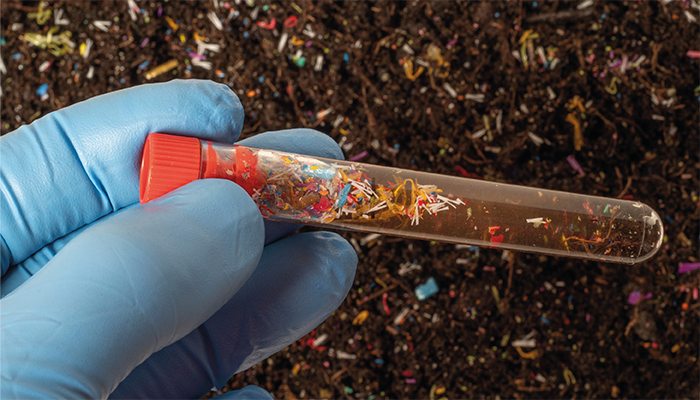
Digging up the (micro)plastics
Various analytical techniques, including Py-GC/MS, microscopy, and Raman spectrometry, are currently used to detect and monitor the distribution of nano- and microplastics (N/MPs) in soil. But they all require cumbersome separation of the soil matter and are unable to detect N/MPs at sizes lower than 1 µm – which are believed to be the most harmful to humans. Now, researchers from Waseda University, Japan, have pushed the limits with a simple spectroscopy-based tool that can detect N/MPs regardless of size and without having to separate the soil organic matter prior to analysis.
How is that possible? “We measured the absorbance of these soil suspensions at various wavelengths ranging from 200 to 500 nm using a spectrophotometer and based on this, determined the N/MP concentrations in the soil. Then the best combination of two wavelengths was identified for measuring N/MPs, which helped negate the interference from soil particles and leached components in the suspension,” explained Kyouhei Tsuchida, lead author of the study, in a press release.
Rapid diagnosis of celiac disease
Continuing with rapid Raman-enabled diagnoses, researchers form Xinjiang University, China, combined plasma Raman spectroscopy with machine learning to rapidly diagnose celiac disease. Despite the fact that the researchers could not find any significant difference between the content of proteins, fatty acids, and phospholipids in the plasma of celiac disease patients and the healthy control group, their deep learning model was able to extract these different features from plasma and accurately diagnose the disease with an accuracy of 92.3 percent.
The researchers believe that their test could be used to diagnose celiac disease much earlier than is possible with existing methods, which – when combined with early treatment – can help slow disease progression.
Just one drop
Infrared spectroscopy combined with machine learning can provide comprehensive health screening from a single drop of blood, according to new research. The team – from Ludwig-Maximilians-Universität München, the Max Planck Institute of Quantum Optics, and Helmholtz Zentrum München – used Fourier transform infrared (FTIR) spectroscopy to analyze 5,184 blood plasma samples from 3,169 individuals. The method could detect molecular fingerprints indicative of various health conditions and distinguish between dyslipidemia, hypertension, prediabetes, type 2 diabetes, and healthy states. It accurately identified healthy individuals and chronic multimorbid states, and it could also forecast metabolic syndrome years before onset.
“Altogether, this study sets a framework with analytical validity and clinical utility that could reduce and streamline clinical operations, improve sample turnarounds, accelerate time to treatment for a variety of medical conditions, and risk stratify populations,” concluded the authors.
Also in the news…
Viral vector vaccines generate stronger immune responses against COVID-19 in newborns and mothers when administered in the second trimester of pregnancy, while mRNA vaccines produce more humoral immunity when given before pregnancy, according to FTIR spectroscopy-based analysis of saliva samples of newborns and their mothers. Link
Faidra Amargianou and colleagues develop a multimodal X-ray microspectroscopy tool to characterize chemical interactions within battery materials at the nanoscale. Link
Proton MR spectroscopy reveals that SARS-CoV-2 disproportionately increases the concentration of choline-containing compounds in the corpus callosum of older post-COVID-19 patients, but these changes were not related to neuropsychological problems of long COVID patients. Link
Researchers use optical microscopy, electron microscopy and spectroscopy to investigate mineralization and protein localization in the aortic valve for the first time, finding that calcium phosphate in the mineral deposits is not the same type as found in bone. Link
Raman spectroscopy can directly detect fumarate in living cells in vivo and animal tissues ex vivo, suggesting that Raman could be adopted as a valuable tool for small molecule metabolic imaging. Link
Researchers use Raman spectroscopy to measure Hammett acidity functions in imidazolium-based ionic liquids, estimating the energy needed to transfer protons from water to ionic liquids; the findings could aid battery development and biomass recycling. Link
Inspired by the core parking strategy of multicore CPUs, researchers develop a miniaturized, user-friendly, and reconfigurable silicon spectrometer based on programmable photonic circuits. Link




